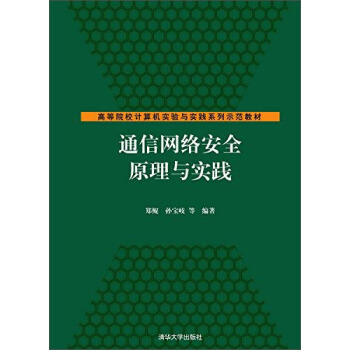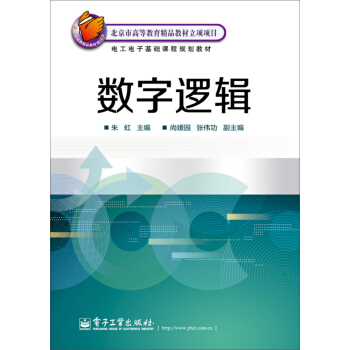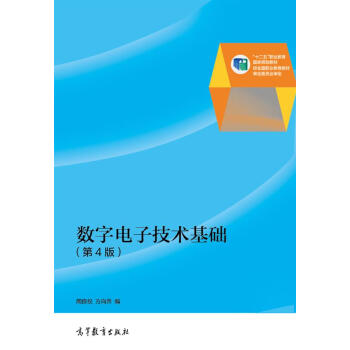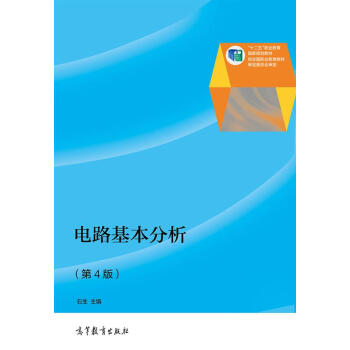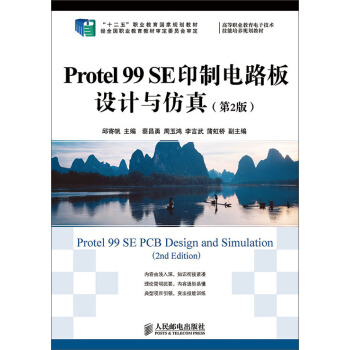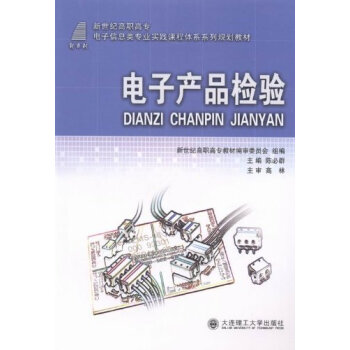

具体描述
内容简介
The progress made in physics and technology of semiconductors depends main.ly on three families of materials: the group-IV elemental,Ⅲ-Ⅴ, and Ⅱ-Ⅵ compound semiconductors.Almost all ⅡⅥ compound semiconductors crystallize either in the zincblende or wurtzite structure.The first research papers on Ⅱ-Ⅶ compound semiconductors date back to the middle of the nineteenth century.In the ensuring hundred years extensive literature has been accumulated as much research and development works are being carried out on these compound semiconductors.At present, the Ⅱ-Ⅵ compound semiconductors are widely used as photodetectors, x-ray sensors and scintillators, phosphors in lighting, displays, etc.New applications are continuously being proposed.Thus, it seems to timely bring together the most up-to-date information on the material and semiconducting properties of Ⅱ-Ⅵ compound semiconductors.目录
PrefaceAcknowledgments
Contents of Other Volumes
10 Cubic Cadmium Sulphide (c—CdS)
10.1 Structural Properties
10.1.1 Ionicity
10.1.2 Elemental Isotopic Abundance and Molecular Weight
10.1.3 Crystal Structure and Space Group
10.1.4 Lattice Constant and Its Related Parameters
10.1.5 Structural Phase Transition
10.1.6 Cleavage Plane
10.2 Thermal Properties
10.2.1 Melting Point and Its Related Parameters
10.2.2 Specific Heat
10.2.3 Debye Temperature
10.2.4 Thermal Expansion Coefficient
10.2.5 Thermal Conductivity and Diffusivity
10.3 Elastic Properties
10.3.1 Elastic Constant
10.3.2 Third—Order Elastic Constant
10.3.3 Young's Modulus, Poisson's Ratio, and Simila
10.3.4 Microhardness
10.3.5 Sound Velocity
10.4 Phonons and Lattice Vibronic Properties
10.4.1 Phonon Dispersion Relation
10.4.2 Phonon Frequency
10.4.3 Mode Gruneisen Parameter
10.4.4 Phonon Deformation Potential
10.5 Collective Effects and Related Properties
10.5.1 Piezoelectric Constant
10.5.2 Frohlich Coupling Constant
10.6 Energy—Band Structure: Energy—Band Gaps
10.6.1 Basic Propertie
10.6.2 Eo—Gap Region
10.6.3 Higher—Lying Direct Gap
10.6.4 Lowest Indirect Gap
10.6.5 Conduction—Valley Energy Separation
10.6.6 Direct—Indirect—Gap Transition Pressure
10.7 Energy—Band Structure: Electron and Hole Effective Masses
10.7.1 Electron Effective Mass: Γ Valley
10.7.2 Electron Effective Mass: Satellite Valley
10.7.3 Hole Effective Mass
10.8 Electronic Deformation Potential
10.8.1 Intravalley Deformation Potential: F Poin
10.8.2 Intravalley Deformation Potential: High—Symmetry Points
10.8.3 Intervalley Deformation Potential
10.9 Electron Affinity and Schottky Barrier Height
10.9.1 Electron Affinity
10.9.2 Schottky Barrier Height
10.10 Optical Properties
10.10.1 Summary ofOptical Dispersion Relations
10.10.2 The Reststrahlen Region
10.10.3 At or Near the Fundamental Absorption Edge
10.10.4 The Interband Transition Region
10.10.5 Free—Carrier Absorption and Related Phenomena
10.11 Elastooptic, Electrooptic, and Nonlinear Optical Properties
10.11.1 Elastooptic Effect
10.11.2 Linear Electrooptic Constant
10.11.3 Quadratic Electrooptic Constant
10.11.4 Franz—Keldysh Effect
10.11.5 Nonlinear Optical Constant
10.12 Carrier Transport Properties
10.12.1 Low—Field Mobility: Electrons
10.12.2 Low—Field Mobility: Holes
10,12.3 High—Field Transport: Electrons
10.12.4 High—Field Transport: Holes
10.12.5 Minority—Carrier Transport: Electrons in p—Type Materials
10.12.6 Minority—Carrier Transport: Holes in n—Type Materials
10.12.7 Impact Ionization Coefficient
11 Wurtzite Cadmium Sulphide (w—CdS)
11.1 Structural Properties
11.1.1 Ionicity
11.1.2 Elemental Isotopic Abundance and Molecular Weight
11.1.3 Crystal Structure and Space Group
11.1.4 Lattice Constant and Its Related Parameters
11.1.5 Structural Phase Transition
11.1.6 Cleavage Plane
11.2 Thermal Properties
11.2.1 Melting Point and Its Related Parameters
11.2.2 Specific Heat
11.2.3 Debye Temperature
11.2.4 Thermal Expansion Coefficient
11.2.5 Thermal Conductivity and Diffusivity
11.3 Elastic Properties
11.3.1Elastic Constant
11.3.2 Third—Order Elastic Constant
11.3.3 Young's Modulus, Poisson's Ratio, and Similar
11.3.4 Microhardness
11.3.5 Sound Velocity
11.4 Phonons and Lattice Vibronic Properties
11.4.1 Phonon Dispersion Relation
11.4.2 Phonon Frequency
11.4.3 Mode Gruneisen Parameter
11.4.4 Phonon Deformation Potential
11.5 Collective Effects and Related Properties
11.5.1 Piezoelectric Constant
11.5.2 Frohlich Coupling Constant
11.6 Energy—Band Structure: Energy—Band Gaps
11.6.1 Basic Properties
11.6.2 Eo—Gap Region
11.6.3 Higher—Lying Direct Gap
11.6.4 Lowest Indirect Gap
11.6.5 Conduction—Valley Energy Separation
11.6.6 Direct—Indirect—Gap Transition Pressure
11.7 Energy—Band Structure: Electron and Hole Effective Masses
11.7.1 Electron Effective Mass: 1— Valley
11.7.2 Electron Effective Mass: Satellite Valley
11.7.3 Hole Effective Mass
11.8 Electronic Deformation Potential
11.8.1 Intravalley Deformation Potential: Γ Point
11.8.2 Intravalley Deformation Potential: High—Symmetry Points
11.8.3 Intervalley Deformation Potential
11.9 Electron Affinity and Schottky Barrier Height
11.9.1 Electron Affinity
11.9.2 Schottky Barrier Height
11.10 Optical Properties
11.10.1 Summary of Optical Dispersion Relations
11.10.2 The Reststrahlen Region
11.10.3 At or Near the Fundamental Absorption Edge
11.10.4 The Interband Transition Region
11.10.5 Free—Carrier Absorption and Related Phenomena
11.11 Elastooptic, Electrooptic, and Nonlinear Optical Properties
11.11.1 Elastooptic Effect
11.11.2 Linear Electrooptic Constant
11.11.3 Quadratic Electrooptic Constant
11.11.4 Franz—Keldysh Effect
11.11.5 Nonlinear Optical Constant
11.12 Carrier Transport Properties
11.12.1 Low—Field Mobility: Electrons
11.12.2 Low—Field Mobility: Holes
11.12.3 High Field Transport: Electrons
11.12.4 High—Field Transport: Holes
11.12.5 Minority—Carrier Transport: Electrons in p—Type Materials
11.12.6 Minority—Carrier Transport: Holes in n—Type Materials
11.12.7 Impact Ionization Coefficient
12 Cubic Cadmium Selenide (c—CdSe)
12.1 Structural Properties
12.1.1 Ionicity
12.1.2 Elemental Isotopic Abundance and Molecular Weight
12.1.3 Crystal Structure and Space Group
12.1.4 Lattice Constant and Its Related Parameters
12.1.5 Structural Phase Transition
12.1.6 Cleavage Plane
12.2 Thermal Properties
12.2.1 Melting Point and Its Related Parameters
12.2.2 Specific Heat
12.2.3 Debye Temperature
12.2.4 Thermal Expansion Coefficient
12.2.5 Thermal Conductivity and Diffusivity
12.3 Elastic Properties
12.3.1 Elastic Constant
12.3.2 Third—Order Elastic Constant
12.3.3 Young's Modulus, Poisson's Ratio, and Similar
12.3.4 Microhardness
12.3.5 Sound Velocity
12.4 Phonons and Lattice Vibronic Properties
12.4.1 Phonon Dispersion Relation
12.4.2 Phonon Frequency
12.4.3 Mode Gruneisen Parameter
12.4.4 Phonon Deformation Potential
12.5 Collective Effects and Related Properties
12.5.1Piezoelectric Constant
12.5.2 Frohlich Coupling Constant
12.6 Energy—Band Structure: Energy—Band Gaps
12.6.1 Basic Properties
12.6.2 Eo—Gap Region
12.6.3 Higher—Lying Direct Gap
12.6.4 Lowest Indirect Gap
12.6.5 Conduction—Valley Energy Separation
12.6.6 Direct—Indirect—Gap Transition Pressure
12.7 Energy—Band Structure: Electron and Hole Effective Masses
12.7.1 Electron Effective Mass:F Valley
12.7.2 Electron Effective Mass: Satellite Valley
12.7.3 Hole Effective Mass
12.8 Electronic Deformation Potential
12.8.1Intravalley Deformation Potentiai: Γ Point
12.8.2 Intravalley Deformation Potential: High—Symmetry Points
12.8.3 Intervalley Deformation Potential
12.9 Electron Affinity and Schottky Barrier Height
12.9.1 Electron Affinity
12.9.2 Schottky Barrier Height
12.10 Optical Properties
12.10.1 Summary of Optical Dispersion Relations
12.10.2 The Reststrahlen Region
12.10.3 At or Near the Fundamental Absorption Edge
12.10.4 The Interband Transition Region
12.10.5 Free—Carrier Absorption and Related Phenomena
12.11 Elastooptic, Electrooptic, and Nonlinear Optical Properties
12.11.1 Elastooptic Effect
12.11.2 Linear Electrooptic Constant
12.11.3 Quadratic Electrooptic Constant
12.11.4 Franz—Keldysh Effect
12.11.5 Nonlinear Optical Constant
12.12 Carrier Transport Properties
12.12.1Low—Field Mobility: Electrons
12.12.2 Low—Field Mobility: Holes
12.12.3 High—Field Transport: Electrons
12.12.4 High—Field Transport: Holes
12.12.5 Minority—Carrier Transport: Electrons in p—Type Materials
12.12.6 Minority—Carrier Transport: Holes in n—Type Materials
12.12.7 Impact Ionization Coefficient
……
13 Wurtzite Cadmium Selenide (w—CdSe)
14 Cadmium Telluride (CdTe)
15 Cubic Mercury Sulphide(β—HgS)
16 Mercury Selenide (HgSe)
17 Mercury Telluride (HgTe)
前言/序言
用户评价
拿到《半导体物理性能手册:第3卷(下)》这本书,我的第一感受是它的沉甸甸分量。这不仅仅是纸张和墨水的重量,更是知识的重量。作为一名对半导体材料充满好奇的学生,我一直觉得理论知识的学习固然重要,但更需要将这些理论与实际的性能表现联系起来。我希望这本书能够提供一个系统性的框架,帮助我理解不同半导体材料在不同物理条件下的行为模式。比如,我一直对某种新型半导体材料在高速通信领域中的应用潜力感到兴奋,但对其具体的载流子动力学特性和能量带结构在实际工作条件下的表现感到模糊。我希望这本书能够提供详细的实验数据和分析,解释这些材料在面临高频信号、大电流冲击时,其性能衰减的机理,以及如何通过结构设计或掺杂来改善其稳定性。此外,我对半导体材料的光电转换效率也十分关注,比如在太阳能电池的应用中,不同材料在不同光谱照射下的性能差异,以及如何通过理论模拟和实验验证来优化材料的能带匹配和载流子复合。这本书如果能在这方面提供清晰的图表和数据,无疑将对我未来的学习和研究提供极大的帮助。
评分作为一名对前沿科技充满热情的研究者,我总是在寻找能够提供深刻见解和可靠数据的资源。《半导体物理性能手册:第3卷(下)》这个书名,立刻吸引了我的注意。我渴望在这本书中找到关于下一代半导体材料的性能预测和分析。比如,在量子计算领域,对具有特殊电子结构和低损耗特性的半导体材料有着极高的需求。我希望这本书能够深入探讨这些新型材料(如拓扑半导体、二维材料)在极端低温、量子退相干环境下的载流子行为,以及它们在构建量子比特时的性能表现。此外,在柔性电子和可穿戴设备领域,对半导体材料的机械性能、光学性能(如透明度、发光效率)以及生物相容性提出了新的挑战。我希望这本书能够提供关于这些材料在弯曲、拉伸、甚至与生物组织接触时的性能稳定性数据,以及如何通过材料设计和制备工艺来满足这些特殊应用的需求。这本书的价值,将在于它是否能为我们指明未来半导体材料发展的方向,提供创新的灵感。
评分《半导体物理性能手册:第3卷(下)》这个书名,让我立刻想到了大学时代为了准备各种实验和报告,在图书馆里翻阅一本本厚重参考书的情景。虽然现在信息获取的渠道更加多样化,但对于像半导体物理性能这样精细且需要精确数据的领域,一本权威的、系统的手册依然是无可替代的。我特别希望这本书能够提供一套标准化的半导体材料性能测试方法和数据分析流程。在实际的器件开发过程中,不同实验室、不同团队使用不同的测试设备和方法,往往会导致数据难以横向对比,甚至产生误导。如果这本书能够详细介绍各种关键性能参数(如击穿电压、阈值电压、漏电流、载流子寿命等)的测试仪器、测试条件、以及数据处理的通用准则,那将极大地提高我们工作的效率和结果的可信度。我还需要了解这些参数如何受到晶体结构、晶界、表面形貌等微观因素的影响,以及如何通过工艺控制来优化和稳定这些参数。这本书的出现,无疑会为我们提供一个可靠的“度量衡”。
评分这本书的标题真是让人肃然起敬——《半导体物理性能手册:第3卷(下)》。光是这名字,就足以让我在书店里驻足许久,好奇地想象着里面到底蕴含了多少深奥的知识。作为一名在半导体领域摸爬滚打多年的工程师,我对这类“硬核”的参考资料总是抱着极大的兴趣和期待。我常常觉得,理论知识是构建高楼大厦的基石,而一本详实的手册,就像是为建筑师提供了最精确的蓝图和最可靠的材料数据。我希望这本书能够深入浅出地梳理半导体材料在各种实际应用场景下的性能表现,比如在高温、低温、强电场、强磁场等极端环境下,它们的导电性、载流子迁移率、光学特性等等会发生怎样的变化。当然,我更期待它能提供一些实用的计算方法、实验数据和性能评估准则,能够指导我们在设计和优化器件时,如何根据具体的性能指标来选择合适的材料,或者如何通过工艺调控来达到预期的性能。毕竟,理论的再精彩,最终还是要落实到实际的性能上,才能真正解决工程上的难题。我相信,这本手册的出现,将会成为我案头上不可或缺的案头书,随时翻阅,汲取养分。
评分每次看到《半导体物理性能手册:第3卷(下)》这类书名,我都会联想到过去那些通宵达旦查阅资料的日子。作为一名经验丰富的研发工程师,我知道,在技术迭代日新月异的今天,想要保持领先,就必须不断更新自己的知识库。这本书的厚重感,让我预感到其中一定包含了大量前沿的研究成果和宝贵的数据。我特别希望这本书能够聚焦于一些当前产业界急需解决的关键技术难题,例如在高性能计算领域,对散热性能要求极高的半导体材料。我希望能够在这本书中找到关于不同宽禁带半导体材料(如碳化硅、氮化镓)在不同工作温度下的热导率、介电常数等关键物理参数的详细数据,以及它们在高温高压环境下长期运行的可靠性评估报告。此外,在微纳电子器件的封装和互连技术方面,我也希望能有所启发。如何选择合适的导热材料和封装工艺,以有效管理器件产生的热量,降低功耗,提高器件寿命,这都是我工作中经常面临的挑战。如果这本书能提供这方面的性能参考和优化建议,对我来说将是巨大的福音。
相关图书
本站所有内容均为互联网搜索引擎提供的公开搜索信息,本站不存储任何数据与内容,任何内容与数据均与本站无关,如有需要请联系相关搜索引擎包括但不限于百度,google,bing,sogou 等,本站所有链接都为正版商品购买链接。
© 2025 windowsfront.com All Rights Reserved. 静流书站 版权所有









